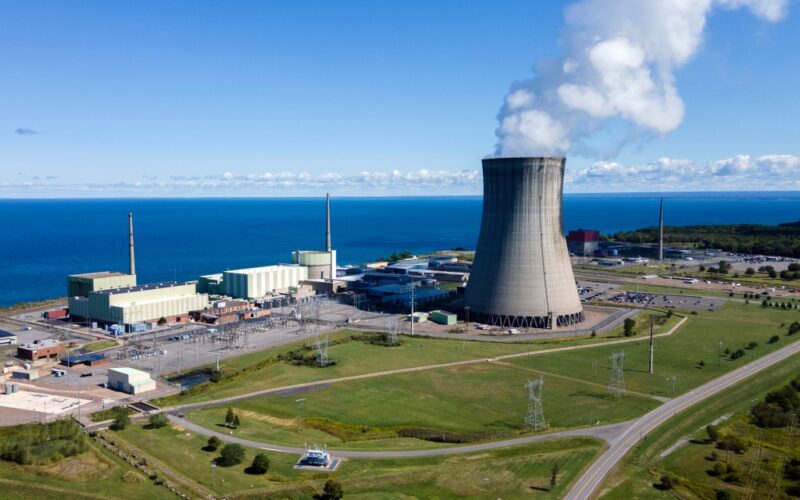The wall I’d like to be a fly on is at the New York Power Authority (NYPA). The largest state-owned public power organization in the United States has been ordered by Gov. Hochul to develop new nuclear energy. This would be the first new reactor construction in the state since Nine Mile Point Unit 2 (photo) came online in 1989.
Whatever the authority picks, the advanced reactor design and technology will be different from what’s operating in New York State today. Since the 1960s-70s, when the state’s current large light water reactors were designed, the menu of nuclear options has become far more diverse and innovative.
Tasked by Hochul to choose a site and a business model, NYPA could opt for a single large reactor, roughly the generating size of those already running now. One candidate might be the Westinghouse AP1000, a 1,000 megawatt unit with an “advanced passive” safety design that greatly simplifies the safety systems.
Or NYPA could take a different path and pursue several small modular reactors (SMRs). These new designs are factory-built and shipped to the site and assembled like high-tech building blocks. Rather than constructing a custom, on-site build of a single gigawatt-scale nuclear power plant, NYPA could add capacity in stages to match electricity demand growth and to spread out capital costs over time.
Prefabricated SMRs feature inherent streamlined safety systems that use uninterruptible passive forces, like gravity and natural heat dissipation, to keep the reactor cool. This approach builds upon the already robust and proven record of today’s large reactors by reducing reliance on pumps and valves.
Outside of New York, two other government-owned utilities — Ontario Power Generation and the Tennessee Valley Authority — have chosen the GE Vernova Hitachi’s BWRX-300 for their first SMR projects, though several other models are available. NuScale Power offers the only SMR design currently licensed by the U.S. Nuclear Regulatory Commission (NRC). Its modular clusters are engineered to deliver exceptional flexibility, making them a good dance partner for power grids challenged by the volatility of intermittent and often unreliable electricity from wind turbines and solar panels. Holtec International, which operates a major manufacturing facility nearby in New Jersey, is also designing a 300-megawatt SMR.
The authority might also piggyback on the federal government’s Advanced Reactor Demonstration Program, a public-private partnership to accelerate the deployment of next-generation reactors that provide reliable, carbon-free electricity for a cleaner grid and American industry. The two flagship recipients of the cost-sharing program are TerraPower and X-energy.
TerraPower is already preparing the area near a retiring coal plant in Wyoming for a reactor-and-storage system that will use a giant molten-salt tank as a thermal battery. Heat stored in the salt will produce steam for generating electricity, allowing the plant to cut back output when demand is low or there is oversupply from wind or sun, and ramp up when the variable generation declines or demand rises.
Meanwhile, X-energy is moving towards a license application at the NRC for a reactor that uses helium and graphite to operate at extremely high efficiency. Planned for Dow’s chemical manufacturing site in Seadrift, Texas, the heat from X-energy’s reactor can generate electricity, replace natural gas in making steam for industrial process heat, or some of each.
All these advanced reactor designs capitalize on more than 50 years of engineering progress since today’s robust fleet of reactors first entered service. Each employs strategies that deliver enormous safety margins and the kind of grid reliability a modern economy depends on — as Hochul has rightly recognized. And they all provide something that was only a secondary consideration in the 1970s: carbon-free energy.
For the decision-makers at the Power Authority, it must feel like returning to a car dealership for the first time in years and discovering new features like cruise control, lane-keeping assist, blind-spot monitoring, back-up cameras, and built-in navigation. Advanced nuclear technology is much the same.
Today’s next-generation reactors are still designed to get us where we need to go by providing reliable, clean energy to homes, businesses and industry, but the improvements make them a very different machine.
We are entering into a new nuclear age, and New York has the chance to be at the forefront.
Hashemian is president of the American Nuclear Society.








